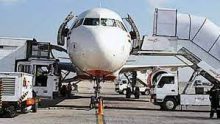 The latest figures from IATA show that in June air cargo demand decreased by 3.4% year on year, while capacity was up 9.7% and the average load factor was down 5.8 percentage points at 43.2%. The percentage fall in volumes was the lowest level since February 2022 and compares with a fall of 8.1% over the first six months of the year. The capacity increase for the month was also lower than the double-digit percentage increases recorded between March and May, reflecting strategic capacity adjustments airlines are making amid a weakened demand environment, IATA said. IATA director general Willie Walsh said: “We remain hopeful that the difficult trading conditions for air cargo will moderate as inflation eases in major economies. This, in turn, could encourage the central banks to loosen the money supply, which could stimulate greater economic activity.”
The latest figures from IATA show that in June air cargo demand decreased by 3.4% year on year, while capacity was up 9.7% and the average load factor was down 5.8 percentage points at 43.2%. The percentage fall in volumes was the lowest level since February 2022 and compares with a fall of 8.1% over the first six months of the year. The capacity increase for the month was also lower than the double-digit percentage increases recorded between March and May, reflecting strategic capacity adjustments airlines are making amid a weakened demand environment, IATA said. IATA director general Willie Walsh said: “We remain hopeful that the difficult trading conditions for air cargo will moderate as inflation eases in major economies. This, in turn, could encourage the central banks to loosen the money supply, which could stimulate greater economic activity.”
Looking at performance indicators, IATA said that global cross-border trade decreased by 2.4% year on year in May, reflecting the “cooling demand environment and challenging macroeconomic conditions”. And June saw both the manufacturing output Purchasing Managers Index or PMI (49.2) and new export orders PMI (47.1) below the 50 mark, indicating a decline in global manufacturing production and exports. Looking at regional performance, Asia Pacific airlines’ cargo volumes decreased by 3.6% in June “mainly owing to weak demand on within-Asia markets”. IATA added that the Asia-North America trade lane saw improved performance.
Breaking News
- ‘Agents may succeed in promoting their products export such as processed minerals, pharmaceuticals, chemicals, tea, steel to Russia’
- ‘The corridor will reduces transportation time & costs, boost Indian exports’
- ‘The corridor will open new gateways for commodities & multimodal logistics’
- ‘Persistent trust deficit, unresolved border issues between India, China must be resolved’
- ‘Agents will benefit with lanes, higher volumes, more capacity‘
- ‘The corridor will strengthen supply chain resilience & open new trade lanes’
- GOX grabs Emerging Terminal Operator Award at ICA 2025
- FedEx fortifies opens new integrated hub in Bengaluru
- ‘Flexible warehousing, customs strategies ups cargo efficiency’
- AISATS begins ground handling ops at Cochin International Airport
- EVA Air, EGAC, EGAS earn IATA’s CEIV Fresh & Live Animals certification
 Cargo Breaking News
Cargo Breaking News


